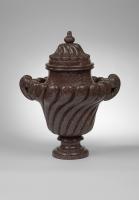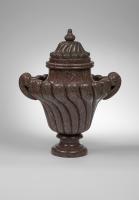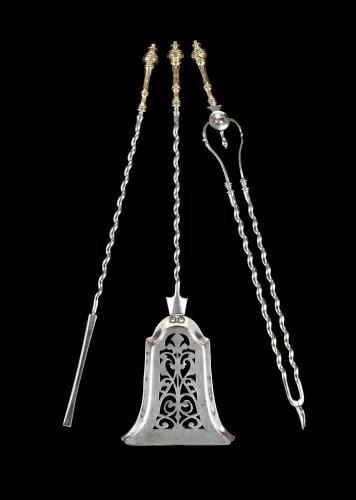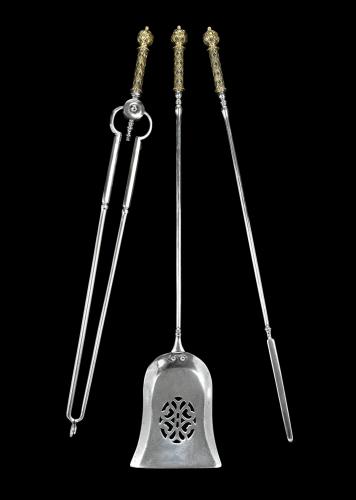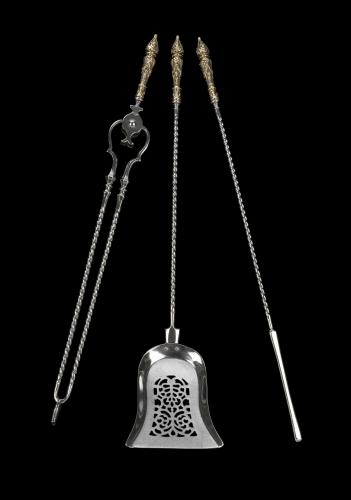
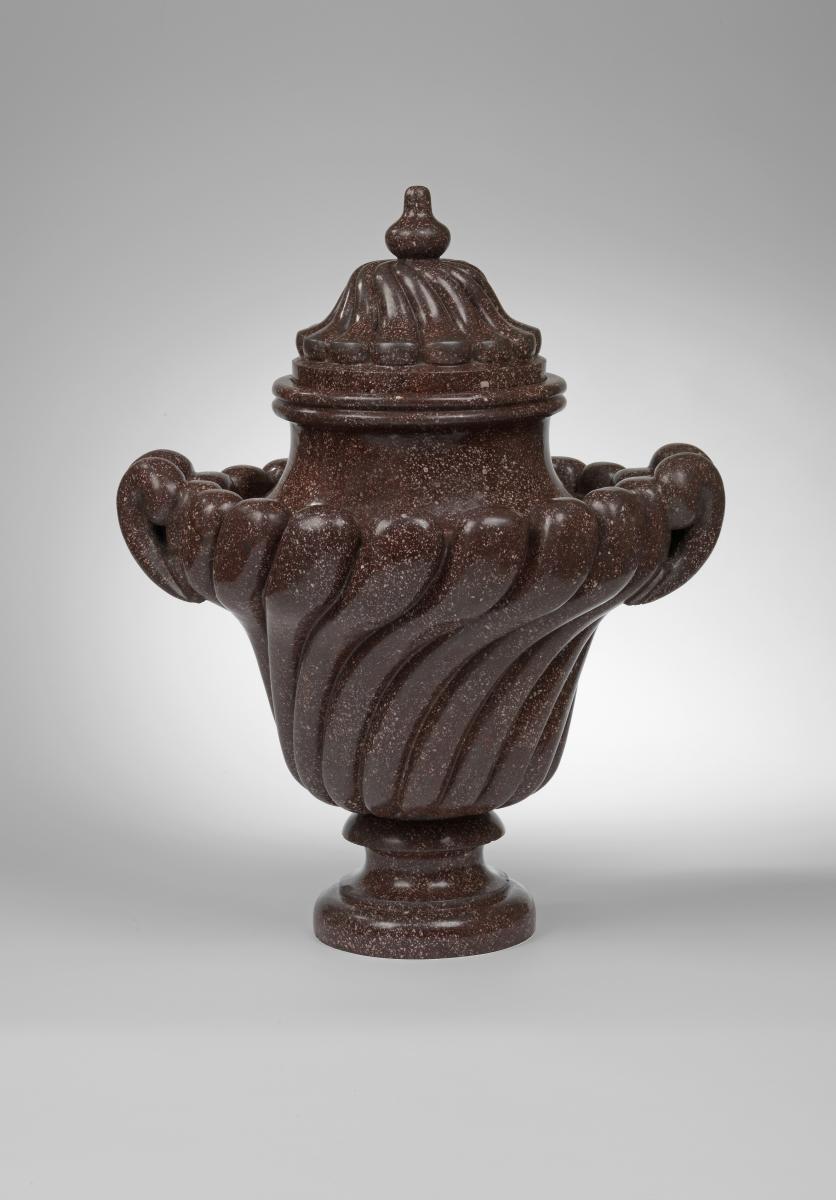
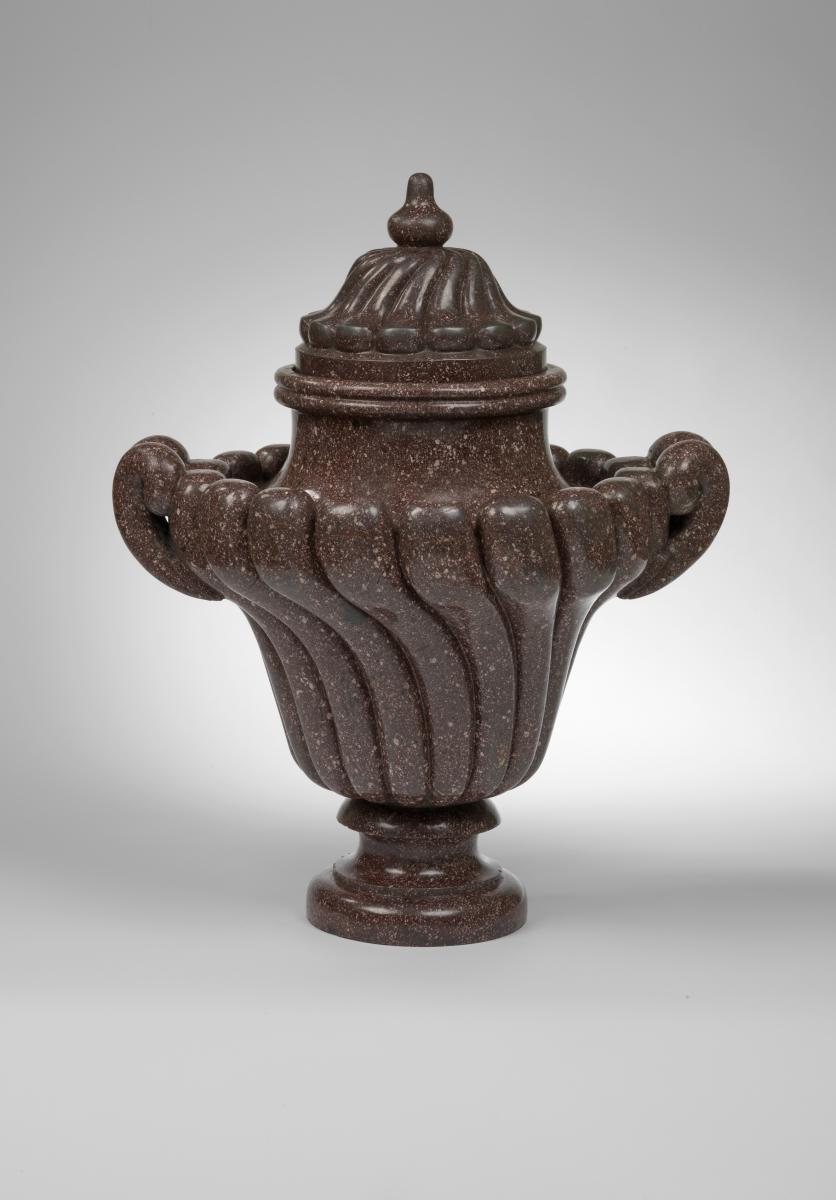
Price on application
This object is eligible for a Certificate of BADA Provenance
The BADA Standard
- Since 1918, BADA has been the leading association for the antiques and fine art trade
- Members are elected for their knowledge, integrity and quality of stock
- Our clients are protected by BADA’s code of conduct
- Our dealers’ membership is reviewed and renewed annually
- Bada.org is a non-profit site: clients deal directly with members and they pay no hidden fees
A Magnificent Pair of Roman Mid 17th Century Covered Vases in Imperial Egyptian Porphyry Attributed to Silvio Calice Circa 1660.
Provenance
Collection of the Marquis de Lévis-Mirepoix, Château de Chaumois-lez-Bois, Côte d’Or, Burgundy, since 1732 (by descent from Gaston Pierre Charles de Lévis-Lomagne (1699-1757), Marquis, and later Duc, de Mirepoix, Maréchal de France). Later in the Château d’Etalant, Côte d’Or, belonging to another branch of the family.
Comparable Items, with Literature:
Paris, Musée du Louvre, département des Objets d’Art. Inv. Nos. MR 2845, 2846 (OA 9225, 9226) – ex-Collection of King Louis XIV – inventoried in 1722 in the Galerie des Glaces of the Château de Versailles :
« Une urne de porphire d’un pied 6 pouces de haut et 2 pieds 3 pouces de diamettre. Sur le couvercle et la panse sont des godrons. Deux cornes liés forment les anses. Une urne idem, au couvercle de laquelle il manque le bouton ».
See : Philippe de Malgouyres, Porphyre : La pierre pourpre des Ptolémées aux Bonaparte, exh. cat., Musée du Louvre, 2003-4, pp.140-41, no. 47. [For the stone, see Monica T. Price, Decorative Stone: The Complete Sourcebook, London, 2007, pp. 202-3].
The best indications for the dating and authorship of the present vases are provided by the history of those in Versailles [there are in the Louvre several others besides those identical to ours]. Louis may have obtained them at second hand from the collection of the disgraced Cardinal Mazarin: indeed, that they were not new in 1722 is proven by the fact that the ‘bouton’ on top of one of their lids was already broken, which would hardly have been the case for anything freshly made at that time. The Cardinal was advised by the Abbé Benedetti, his agent in Rome, who was a familiar of the Barberini [patrons of - among others - Bernini] and the Francophile party in the Vatican. He was in direct contact with the craftsmen who worked for the Cardinal and may also have acted as a dealer for some of them. After Mazarin’s death in 1661 Benedetti became the King’s own agent in Rome. He used to make detailed and captioned drawings of proposed purchases, in order to help the King make his decisions. One of these shows five vases of ornate shapes - typical of the Baroque in the middle of the seventeenth century - and of descending sizes and two further ones, including one of the present type, on its reverse (Bibliothèque Nationale de France. Cabinet des Estampes: Desseins de sept vazes de différentes formes de l’Abbé Benedetti - Malgouyres, p.138, fig. 65; p. 140, fig.66). The only way of dating this sheet is thanks to the close similarity of three of the designs to those of some vases in the collection of the Doria-Pamphilij Princes, which in turn are connected with payments in 1646 and 1647 to one Silvio Calice, a well-known specialist in working porphyry. This is fascinating, for – by extension - it indicates the name of the probable maker of the present vases too. His surname, which means ‘chalice’ or ‘cup’ in Italian, may even have been derived from some of his products – or those of his father or ancestors. In the Eternal City there was a supply of porphyry at second hand from ancient Rome in the form of abandoned columns, etc., from collapsed edifices. All of this originated from the quarries of Gebel Dokhan in the Eastern Desert of Egypt, which were opened in the 1st century AD and worked until the 5th. They were particularly exploited during the reigns of the Emperors Nero, Trajan and Hadrian, and the immensely durable, mottled purple stone was reserved for imperial use. It was quarried and worked by convict and slave labour, including many Early Christians, condemned for their belief. In the Renaissance, and especially during the ensuing Baroque period, the material was reworked by the stone-cutters (scarpellini) of Rome to suit the taste of their patrons, who wished to assimilate themselves with the prestigious culture of the ancient world. The most likely candidate as the original purchaser/collector of the present splendid pair of porphyry vases in this distinguished family is Gaston Pierre Charles de Lévis-Lomagne (1699-1757), Marquis, and later Duc, de Mirepoix, Maréchal de France. Beginning life as a military man, he made two good marriages, and his second wife was an assiduous courtier. In 1738, as Ambassador of France to the court of the Holy Roman Emperor in Vienna, he was responsible for regaining possession of Lorraine for France. For this he was granted the Ordre du Saint-Esprit and later became Extraordinary Ambassador to London. The Maréchal de France must have admired the similar vases in the Palace of Versailles when they were displayed in the new Galerie des Glaces, and – such was his prestige - would presumably have acquired the present, identical pair, from the same source as the King to provide an appropriately grand decoration for his own home.
This report has been prepared in good faith after an attentive examination of the original works of art and represents the opinion of the undersigned at the date stated but does not constitute a guarantee.
Dr Charles Avery
Girton, Cambridge
20 June 2012
Dimensions
49 x 57cm HighThe BADA Standard
- Since 1918, BADA has been the leading association for the antiques and fine art trade
- Members are elected for their knowledge, integrity and quality of stock
- Our clients are protected by BADA’s code of conduct
- Our dealers’ membership is reviewed and renewed annually
- Bada.org is a non-profit site: clients deal directly with members and they pay no hidden fees


